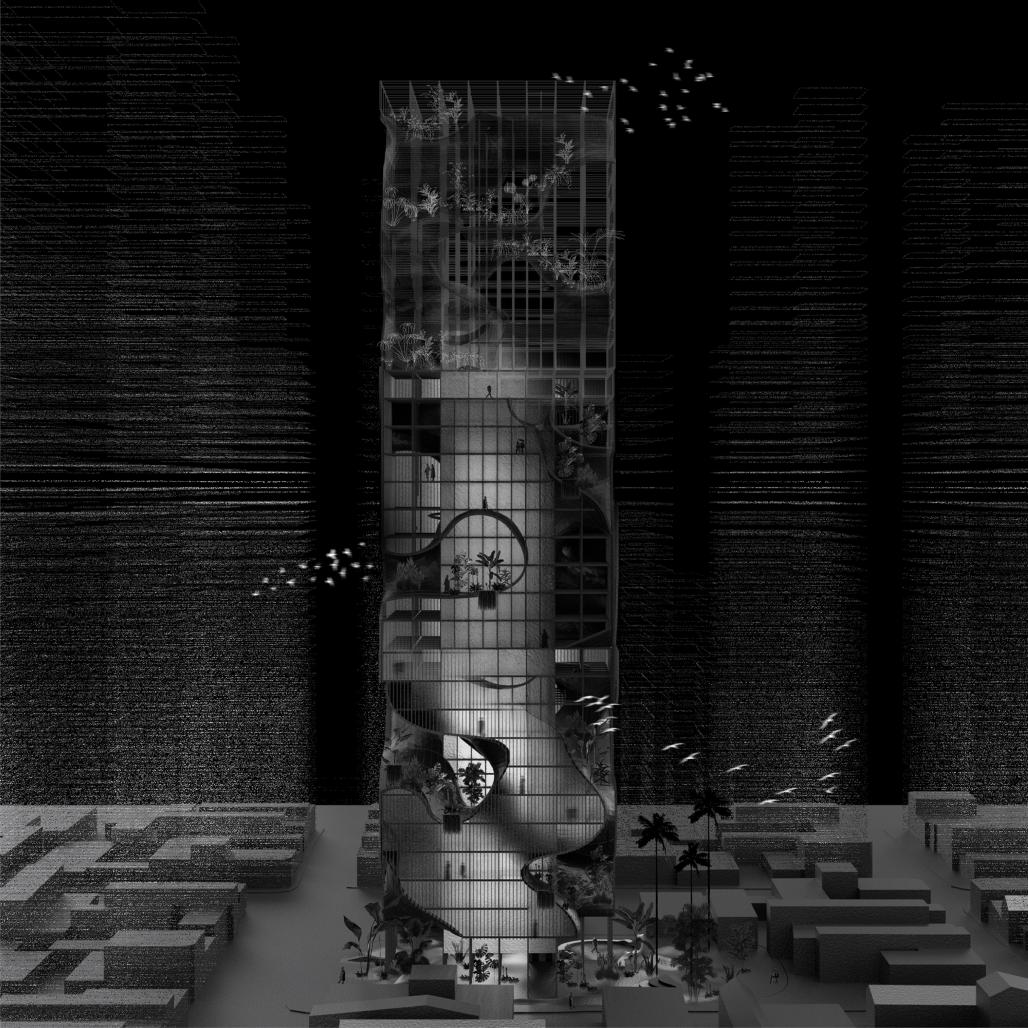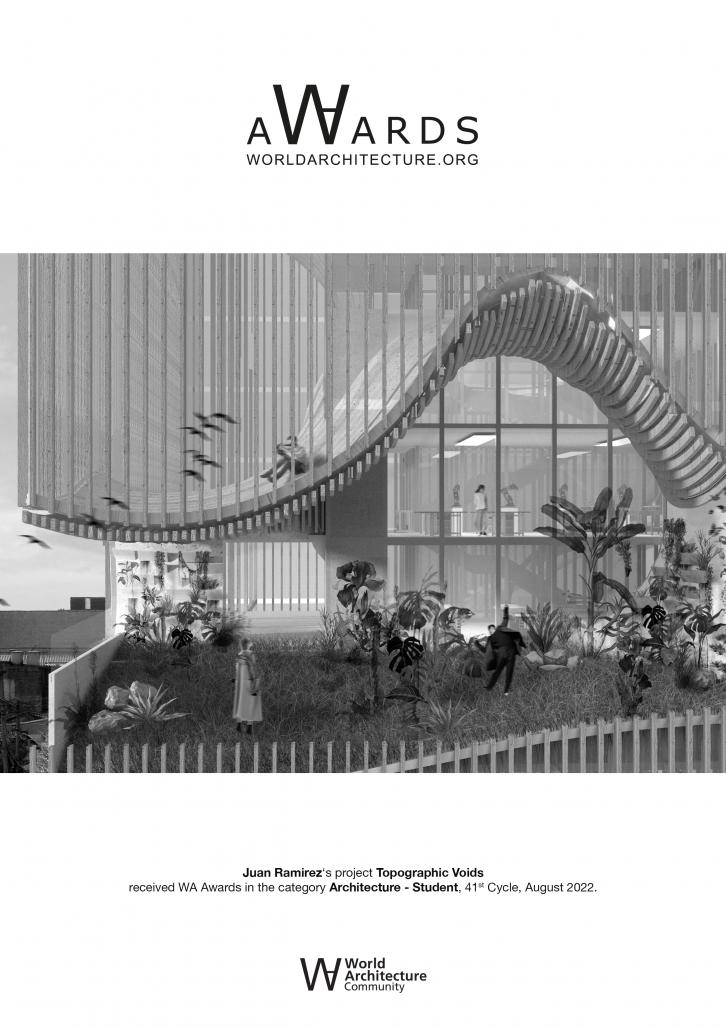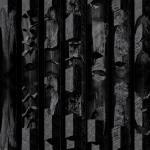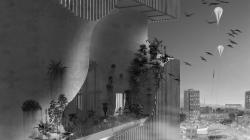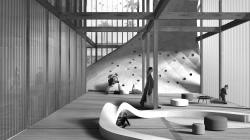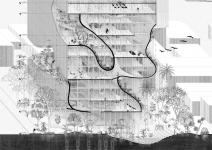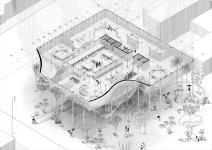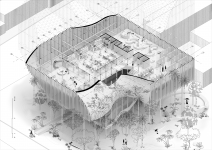"Topographic voids" proposes a new model of verticalization of a traditional Latin American neighborhood in Bogotá, Colombia, characterized by carpentry and joinery work as its main economic activity, marked with some specific urban conditions such as lack of green spaces, low porosity, and a high programmatic load at the first level. The proposal seeks to precede the urban renewal processes proposed for the area by verticalizing the first level activity in order to maintain the trade as an emblematic piece of the place, and explores a new vertical landscaping system so as to increase green areas by rising them in the middle of the dense urban fabric. The project is built on a modular structure that grows in connection with the vertical development process of the city through a wooden structural system marked by three construction stages; through different parametrization processes, a series of voids are generated in the structure on which various biomes are proposed: those biomes replicate and recreate different Colombian thermal floors that change their thermal and plant condition as it grows vertically, so the project explores a new way of insert environmental and topographical scenes in an architectural body.
On the other hand, the project proposes to re-signify the carpentry and joinery work typical of the place of intervention through the consolidation of a large laboratory for the alternative exploration of wood: a central programmatic core is proposed where classrooms, workshops, and other spaces are located, dedicated to the treatment of the material, which is complemented with a social, communal and residential program that is inserted in the periphery of the structural core.
2021
The project is modeled from a grasshopper parameterization code that alters and generates subtractions on a traditional grid in which voids are created where various natural biomes are inserted. A modular wooden structure is worked with various types of joints that allow the building to grow at the same rate as the vertical growth of the city, so that it does not impose itself as a foreign body in the intervention site. For this, codes and models were implemented in rhinoceros that allow simulating the drawing and growth of the project.
DESIGN: Juan Ramirez
TUTORS: Claudio Rossi & Daniela Atencio
Topographic Voids by Juan Ramirez in Colombia won the WA Award Cycle 41. Please find below the WA Award poster for this project.
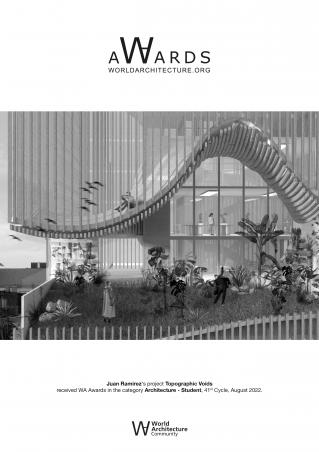
Downloaded 0 times.
